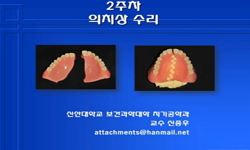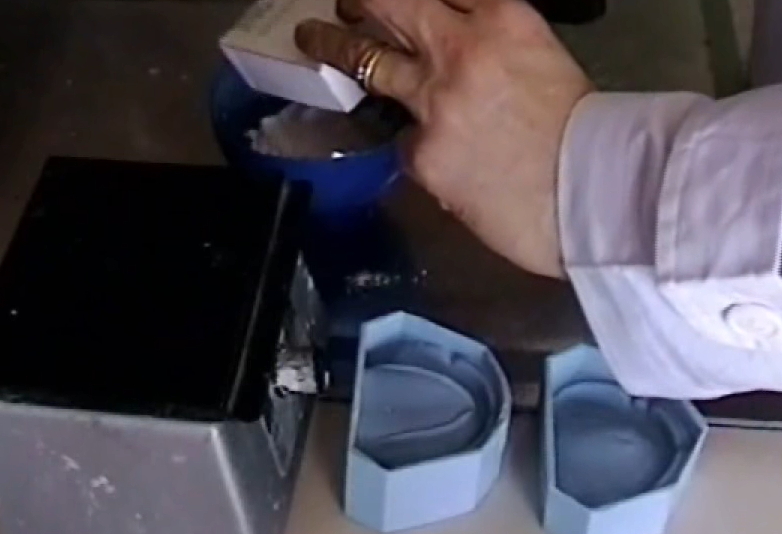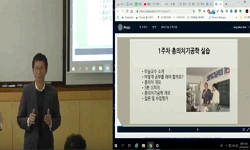자연발생 배수체를 이용한 다양한 육종 소재를 개발함에 있어 그 효율성을 평가하고자 종자의배형성이 다른 일부 만다린 잡종에 대해 종자 형성 정도, 자연발생 배수체의 발생빈도, 배수체...
http://chineseinput.net/에서 pinyin(병음)방식으로 중국어를 변환할 수 있습니다.
변환된 중국어를 복사하여 사용하시면 됩니다.
- 中文 을 입력하시려면 zhongwen을 입력하시고 space를누르시면됩니다.
- 北京 을 입력하시려면 beijing을 입력하시고 space를 누르시면 됩니다.



만다린 잡종에서 자연발생 배수체의 발생 빈도와 생장 특성 = Frequency and Growth Characteristics of Polyploids Occurred Spontaneously in Some Mandarin Hybrids
한글로보기https://www.riss.kr/link?id=A100467052
-
저자
송관정(Kwan Jeong Song) ; 김샛별(Sat Byul Kim) ; 박재현(Jae Hyun Park) ; 오은의(Eun Ui Oh) ; 이경욱(Kyunguk Lee) ; 김동욱(Dong Wook Kim) ; 강종훈(Jong-Hoon Kang) ; 김정순(Jeong-Soon Kim) ; 오정환(Jeong Hwan Oh) ; Fred G. Gmitter (University of Florida, CREC)
- 발행기관
- 학술지명
- 권호사항
-
발행연도
2011
-
작성언어
Korean
-
주제어
염색체 ; 배수성분석기 ; 단배성 ; 다배성 ; 기공 ; chromosome ; flow cytometry ; monoembryony ; polyembryony ; stomata
-
KDC
525
-
등재정보
KCI등재,SCIE,SCOPUS
-
자료형태
학술저널
- 발행기관 URL
-
수록면
617-622(6쪽)
-
KCI 피인용횟수
8
- 제공처
-
0
상세조회 -
0
다운로드
부가정보
국문 초록 (Abstract)
자연발생 배수체를 이용한 다양한 육종 소재를 개발함에 있어 그 효율성을 평가하고자 종자의배형성이 다른 일부 만다린 잡종에 대해 종자 형성 정도, 자연발생 배수체의 발생빈도, 배수체의 생장 특성을 분석하였다. 다배성의 "Amakusa", "Haruka", "Hayaka" 및 "Seminole" 4품종과 단배성의 "Benibae"와 "Harehime" 2품종에 대해 방임수분된 과실로부터 종자를 채취하였다. 과실당 종자수는 10.0개이었고, 이 중 소형의 발육종자 형성 빈도는 25.1%이었다. 이들 소형 종자의 기내발아 식물체에 대해 배수체 분석기 및 염색체 분석으로 배수성을 분석하고 배수체를 선발하였다. "Harehime" 3배체 1개, "Amakusa" 4배체 1개, 그리고 "Benibae" 4배체 1개가 각각 획득되었다. 이들 4배체와 3배체의 잎의 형태, 두께, 엽병 길이 및 절간장을 2배체와 비교하였는데, 큰 차이는 나타나지 않았다. 그러나 기공의 크기와 분포에 있어서는 분명한 차이를 나타내어 3 또는 4배수체 식물에서 기공의 크기가 커지고 분포 밀도는 감소하였다. 엽록소 함량을 나타내는 SPAD 값과 광합성 정도에 있어서는 큰 차이를 나타내지 않았다. 본 연구결과로 감귤 만다린 잡종에서 방임수분으로도 자연발생 배수체 생산이 가능하며, 다배성보다는 단배성에서 발생 빈도가 높은 것을 확인할 수 있었다.
다국어 초록 (Multilingual Abstract)
The study was conducted to determine the efficiency in producing spontaneous polyploids in some mandarin hybrids with different seed embryony. Seed formation by open pollination, frequency of spontaneous polyploids, and plant growth characteristics we...
The study was conducted to determine the efficiency in producing spontaneous polyploids in some mandarin hybrids with different seed embryony. Seed formation by open pollination, frequency of spontaneous polyploids, and plant growth characteristics were evaluated in four mandarin hybrids with polyembryony such as "Amakusa", "Haruka", "Hayaka", and "Seminole" and two with monoembryony such as "Benibae" and "Harehime". The mean number of the developed seeds per fruit was 10.0 and frequency of small seeds was 25.1%. Polyploids were selected from plants germinated in vitro by a flow cytometry and confirmed by chromosome analysis. One triploid was produced from "Harehime", one tetraploid, "Amakusa", and one tetrapoid, "Benibae". There were little differences in leaf shape, thickness, petiole length, and internode length between diploids and polyploids such as tri- or tetraploid. However, polyploids had larger stomata and lower density of stomata in abaxial epidermis than diploids. SPAS indicating chlorophyll con tent and photosynthetic rate were significantly affected by ploidy level. The results indicated that spontaneous polyploids might be produced by open pollination in some mandarin hybrids and monoembryony had higher frequency in polyploid occurrence than polyembryony.
참고문헌 (Reference)
1 Oiyama, I., "Use of pollen from a somatic hybrid between Citrus and Poncirus in the production of triploids" 26 : 1082-, 1991
2 Toolapong, P., "Triploids and haploid progenies derived from small seeds of Banpeiyu, a pummel, crossed with Ruby Red grapefruit" 65 : 255-260, 1996
3 Costa, M.A.P, "Stomatal analysis of citrus somatic hybrids obtained by protoplast fusion" 39 : 297-300, 2004
4 Aleza, P., "Production of tetraploid plants of non apomictic citrus genotypes" 28 : 1837-1846, 2009
5 Wakana, A., "Production of tetraploid forms of acid citrus cultivars by top grafting of shoots with sprouting axially buds treated with colchicines" 50 : 93-102, 2005
6 Chen, C., "Orgin and frequency of 2n gametes in Citrus sinensis × Pocirus trifoliate and their reciprocal crosses" 174 : 1-8, 2008
7 Usman, M., "Occurrence of spontaneous polyploids in Citrus" 33 (33): 124-129, 2006
8 Recupero, G.R., "New promising Citrus triploid hybrids selected from crosses between monoembryonic diploid female and tetraploid male parents" 40 : 516-520, 2005
9 Matsumoto, R., "New citrus cultivar ‘Setoka’" 2 : 25-31, 2003
10 Romero-Aranda, R., "Leaf characteristics and net exchange of diploid and autotetraploid citrus" 79 : 153-160, 1997
1 Oiyama, I., "Use of pollen from a somatic hybrid between Citrus and Poncirus in the production of triploids" 26 : 1082-, 1991
2 Toolapong, P., "Triploids and haploid progenies derived from small seeds of Banpeiyu, a pummel, crossed with Ruby Red grapefruit" 65 : 255-260, 1996
3 Costa, M.A.P, "Stomatal analysis of citrus somatic hybrids obtained by protoplast fusion" 39 : 297-300, 2004
4 Aleza, P., "Production of tetraploid plants of non apomictic citrus genotypes" 28 : 1837-1846, 2009
5 Wakana, A., "Production of tetraploid forms of acid citrus cultivars by top grafting of shoots with sprouting axially buds treated with colchicines" 50 : 93-102, 2005
6 Chen, C., "Orgin and frequency of 2n gametes in Citrus sinensis × Pocirus trifoliate and their reciprocal crosses" 174 : 1-8, 2008
7 Usman, M., "Occurrence of spontaneous polyploids in Citrus" 33 (33): 124-129, 2006
8 Recupero, G.R., "New promising Citrus triploid hybrids selected from crosses between monoembryonic diploid female and tetraploid male parents" 40 : 516-520, 2005
9 Matsumoto, R., "New citrus cultivar ‘Setoka’" 2 : 25-31, 2003
10 Romero-Aranda, R., "Leaf characteristics and net exchange of diploid and autotetraploid citrus" 79 : 153-160, 1997
11 Yasuda, K., "J. Japan Soc. Hort. Sci" 79 : 16-22,
12 Dutt, M., "In vitro production of autotetraploid Ponkan mandarin (Citrus reticulate) using cell suspension culture" 173 : 235-242, 2010
13 Jin-Ung Yun, "Identification of Zygotic and Nucellar Mandarin Seedlings Using Randomly Amplified Polymorphic DNA" 한국원예학회 48 (48): 171-175, 2007
14 Murashige, T, "Growth factor requirements of citrus tissue culture" 3 : 1155-1161, 1969
15 Chen, C.L., "Cytogenetic analysis of two interspecific Citrus allotetraploid somatic hybrids and their diploid fusion parents" 123 : 332-337, 2004
16 Oiyama, I, "Citrus pentaploids from small seeds of diploid × diploid crosses" 26 : 292-293, 1991
동일학술지(권/호) 다른 논문
-
배 '신고' 의 만개일 및 생육기 기상을 이용한 수확일 예측
- 한국원예학회
- 한점화(Jeom Hwa Han)
- 2011
- KCI등재,SCIE,SCOPUS
-
GA3에 의한 산호수의 화아형성과 착과 및 비대 증진효과
- 한국원예학회
- 길미정(Mi-Jung Kil)
- 2011
- KCI등재,SCIE,SCOPUS
-
국내 자생종 및 도입종 만병초의 내한성과 관련된 형태 및 생리적변화
- 한국원예학회
- 이병철(Byung Chul Lee)
- 2011
- KCI등재,SCIE,SCOPUS
-
토마토 펄라이트 베드재배시 배액전극 제어법에 적합한 측정틀 설계
- 한국원예학회
- 김성은(Sung Eun Kim)
- 2011
- KCI등재,SCIE,SCOPUS
분석정보
인용정보 인용지수 설명보기
학술지 이력
| 연월일 | 이력구분 | 이력상세 | 등재구분 |
|---|---|---|---|
| 2023 | 평가예정 | 해외DB학술지평가 신청대상 (해외등재 학술지 평가) | |
| 2020-01-01 | 평가 | 등재학술지 유지 (해외등재 학술지 평가) |  |
| 2017-02-08 | 학술지명변경 | 외국어명 : Korean Journal of Horticultural Science & Technology -> Horticultural Science & Technology |  |
| 2011-01-01 | 평가 | 등재학술지 유지 (등재유지) |  |
| 2009-01-01 | 평가 | 등재학술지 유지 (등재유지) |  |
| 2007-01-01 | 평가 | 등재학술지 유지 (등재유지) |  |
| 2004-01-01 | 평가 | 등재후보학술지 선정 (신규평가) |  |
| 2003-01-01 | 평가 | 등재후보 1차 PASS (등재후보1차) |  |
| 2002-07-01 | 평가 | 등재후보학술지 선정 (신규평가) |  |
학술지 인용정보
| 기준연도 | WOS-KCI 통합IF(2년) | KCIF(2년) | KCIF(3년) |
|---|---|---|---|
| 2016 | 0.92 | 0.74 | 0.83 |
| KCIF(4년) | KCIF(5년) | 중심성지수(3년) | 즉시성지수 |
| 0.77 | 0.73 | 1.115 | 0.19 |




 ScienceON
ScienceON DBpia
DBpia






